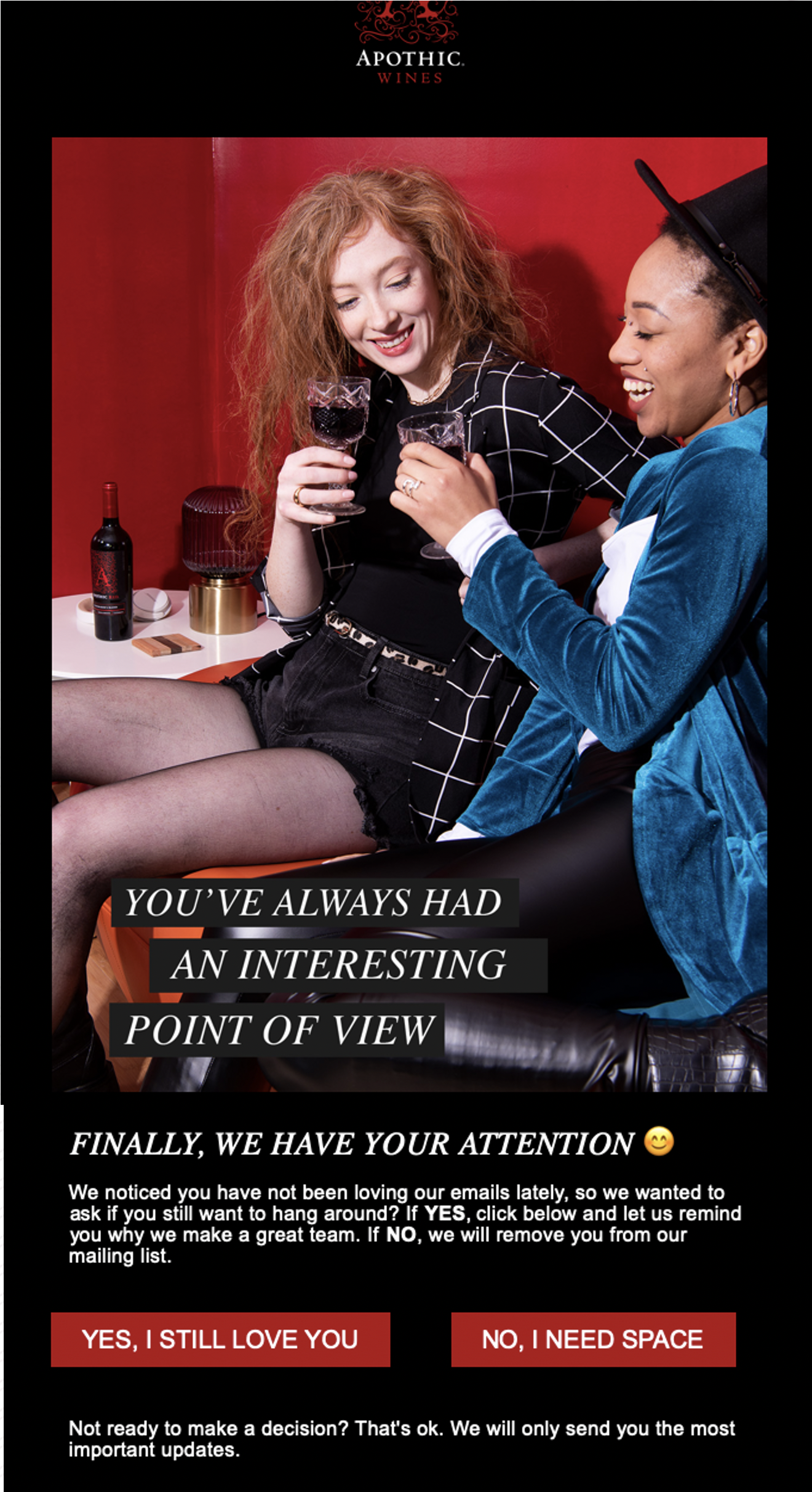
Going Beyond Metrics
Elevating Your Marketing with Customer Intimacy
by Susan DeMatei
In the labyrinth of business acumen, where budgets are as arbitrary as a cat chasing a laser pointer, understanding your customers will be the secret sauce to marketing success in 2024. So, let’s dive into the sophisticated world of customer intimacy, armed with the wisdom required to elevate your marketing game.
The Quest for Data
You will initially pursue customer intimacy by delving into the abyss of your e-commerce, POS, or sales system. This could be scary if your customer data resembles a scattered puzzle across platforms like OrderPort, Shopify, and MailChimp. But if that is the case, fear not! You can consolidate data sources with a unique identifier—like a customer ID—across all platforms and a little leg work. (Excel aficionados, this is your time to shine.)
Some of you may be tempted to use AI for database analysis. Amidst the AI chatter, where algorithms whisper sweet nothings about data analysis, it’s worth exploring these digital soothsayers. Allow yourself time to sign up for some trial periods and upload your data into a few tools. A gentle reminder: when utilizing online tools, guard the sanctity of customer data by excising any Personal Identifiable Information (PII) like name, phone, address, or email. Let’s not make our customers regret trusting us with their digits. I am old school and enjoy my quiet time with Excel, but that’s for another day’s therapy.
The Search for Enlightenment
Whether you’re caressing the data by hand or entrusting a database tool with the task, arm yourself with essential fields:
- Location or Address: Allows you to unleash the power of geo-targeting and local programs.
- Database Entry Date: You might gauge customer activity duration—active or dormant.
- Order Count: With this, you can ascertain frequency patterns for strategic maneuvers.
- Customer Lifetime Value: A financial nametag revealing the worth of each customer.
- Average Order Value: The arithmetic conductor that should be guiding your promotional symphony.
- First and Last Order Dates: These dates help navigate recency and purchase patterns.
Customer Classifications: Ensures you follow through on the levels of club memberships or other categories.
A Bird in the Hand…
Once you have the database organized, look for contacts who have yet to purchase. According to the Harvard Business Review, retaining an existing customer is significantly more cost-effective—between five and 25 times less expensive than wooing a new one. In the grand tapestry of customer data, let us not neglect the enigmatic non-buyers, affectionately termed “prospects.” Often overlooked, these prospects hold hidden gems of knowledge.
Prospects do have an expiration date. When that is might be up for debate, but at WGM, we typically assume that anyone who has been waiting for you to ask them on a date for 24 months or more…is probably just not that into you anymore. So we recommend a drip campaign and message plan for anyone in your database within two years who has joined the mailing list but hasn’t purchased yet. (If older than two years, we recommend giving them a trial email.)

Apothic did this flawlessly with this email. They noticed I always opened the email but never clicked on it, and they called me on it! Also, realizing that anyone who signed up for their quirky brand was probably a little left-of-center themselves, they attempted to connect with me on that personality trait. Brilliant.
Remember, these people don’t know you. Keep your messages introductory and your expectations low. You want them to click and find out more about your winemaker or sustainability online. Don’t try to sell them a club membership or magnum vertical.
Oh, and track the origins of these prospects; were they refugees from an event, or did they trickle in through the tasting room? Deciphering the sources might illuminate paths that lead to traffic but not sales.
The Art of Segmenting Buyers
Transitioning to the realm of buyers, here’s where you can dance with the data. If you have the number fields listed above, you have all the information you need to segment your customers in the classic RFM analysis—via Recency, Frequency, and Monetary value. You need all three of these to triangulate value. Think about it – what is more valuable: a customer who spent $5,000 once at his daughter’s wedding two years ago or a customer who purchased $4,000 over four orders in the last three months? You need the R and the F with the M to determine which customers are on the Christmas party VIP list.
And if you want to blow your mind – dive into the pool of data appends. An append is legally acquired additional contact data from sources like the National Change of Address (NCOA) database and can breathe new life into your decaying database. Augment your knowledge with demographic data—age, income, family structure—and if you’re feeling adventurous, explore psychographic data for a deeper understanding of your customers. With these added bits of information, it truly starts to make your customers come to life in a way that can significantly shape your marketing.
Other Sources of Data
Database analysis is excellent but will provide you with only some of the answers. If you can’t figure out why your repeat buyers aren’t joining the club or why first-time buyers don’t come back, you can always ask them! Embark on the journey of surveys and craft questions with finesse, unraveling the mysteries of consumption habits, spending thresholds, and the elusive reasons behind non-club memberships or dormant purchases. When wielded with precision, surveys unlock the door to customer opinions that data alone cannot unveil.
In this splendid journey to intimacy, do not overlook the wisdom of those on the frontline—the tasting room and club managers. Their insights, complaints, and observations are pearls of wisdom. They know what sells, what irks, and the secret desires of your customers. Consult your staff, for they are the unsung heroes in the customer knowledge odyssey.
Unleashing Customer Insights: Elevating Your Marketing Arsenal
Ok – so you’ve looked at your database, completed a data append or survey, and talked to your tasting room staff. Once you’ve acquainted yourself with the nuances of your clientele, what do you do with this wisdom? Here are six refined strategies to deploy in your marketing arsenal.
1. Targeting Ads with Panache
Let’s start with the most obvious yet often neglected aspect: You can use customer information when targeting ads or boosted posts. Imagine if someone asked you to describe yourself, and you responded with a single interest. Absurd, right? Similarly, your customers are multifaceted individuals. So why restrict your ad targeting to generic wine keywords like “cabernet” or “winetasting”? Let’s incorporate some sophistication into the mix by adding travel preferences, interests, geography, or lifestyle. When you move beyond surface-level interests by delving into personas, you can understand your customers’ affinities, like finance or travel. For instance, if your target is an avid investor or a travel buff, create personas to tailor your strategies. Test and compare these personas with other targets, unleashing a more nuanced approach to your campaigns.
2. Be Strategic With Shopping Channel Preferences
Knowledge is power, and knowing how your customers prefer to shop is no exception. Whether they frequent the tasting room, order beyond their club shipment, or prefer online transactions, tailor your outreach accordingly.

Take a cue from the Container Store, which targeted online buyers when launching a new kitchenware line in physical stores. Leverage your customer’s comfort level and preference for online shopping to pre-load carts with similar product groupings. Strategic, efficient, and customer-centric.
3. Building Trust Through Connection
Research affirms that trust is the cornerstone of brand loyalty. Connection fosters trust, and knowing your customers enables you to establish that connection. Recommend products they love, propose offers within their budget, and converse about topics close to their hearts. Diversify your creative content based on distinct audience interests. For example, conscious consumers seeking thoughtful, sustainable products receive tailored messaging different from flavor explorers eager for adventurous tastes. While maintaining brand consistency, adapt your content to resonate with diverse audience segments.
4. Mastering the Art of Timing with Automation
Timing is more than just an element of comedy; it’s a pivotal factor in effective marketing. Consider Apothic’s email strategy based on customer engagement. Automated emails triggered by behavioral patterns are a potent tool in your marketing repertoire.
5. Precision in Products and Pricing
Avoid the faux pas of offering a reserve cabernet magnum to someone who only bought a bottle of Rosé. Tailor your offers based on customer buying patterns. Acknowledge their choices with targeted offers that express gratitude and convey value.
6. Website Organization for Customer Satisfaction
Leverage customer data to refine your website’s user experience. Organize your website navigation to guide different personas seamlessly. The ultimate goal? Craft various customer journeys that ensure satisfaction and transform one-time buyers into repeat customers.
The Final Destination
In conclusion, dear marketer, in 2024, customer intimacy is your North Star. By coordinating your data, appendages, surveys, and staff insights, you can unearth the gems within your customers, for by knowing them intimately, you shall ascend to the pantheon of world-class marketers. May your strategies be as finely aged as a good Bordeaux and your budgets as resilient as a cat with nine lives. Onward to marketing triumphs in the era of customer personalization and transparency!


